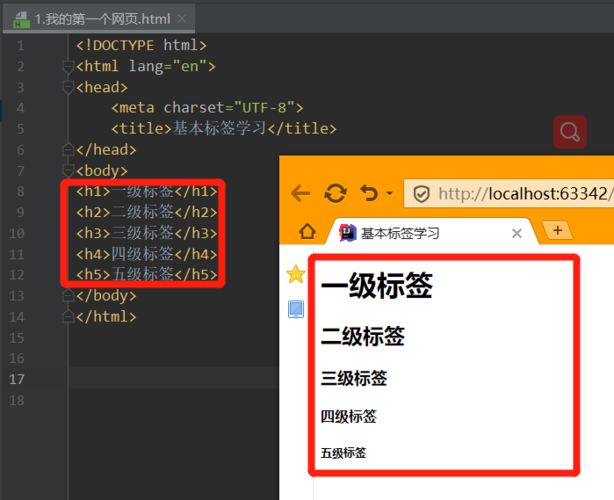HTML(HyperText Markup Language,超文本标记语言)是一种用于创建网页的标准标记语言,在
HTML中,有许多预定义的标签,这些标签可以帮助我们更好地组织和呈现网页内容,注册标签是一种特殊的HTML标签,它用于定义一个自定义的组件,例如表单、列表等,在本教程中,我们将详细介绍如何使用
注册标签。,1、了解注册标签,注册标签是一种特殊的HTML标签,它由两部分组成:标签名和属性,标签名是一个唯一的标识符,用于表示自定义组件的类型,属性是一组键值对,用于描述组件的特性,注册标签通常以大写字母开头,以区分于普通HTML标签。,2、创建自定义组件,要创建一个自定义组件,首先需要定义一个注册标签,注册标签的定义通常放在
<script>标签内,如下所示:,在这个例子中,我们定义了一个名为
mycomponent的注册标签,这个标签继承自
HTMLElement类,并重写了构造函数,现在,我们可以在HTML中使用这个自定义组件了。,3、使用自定义组件,要在HTML中使用自定义组件,需要在
<customelement>标签内添加组件的内容。,在这个例子中,我们在
<body>标签内添加了一个
<mycomponent>标签,浏览器会自动识别这个标签,并将其替换为我们在脚本中定义的自定义组件。,4、添加属性和方法,要为自定义组件添加属性和方法,可以在注册标签的定义中添加它们。,在这个例子中,我们为自定义组件添加了一个名为
prop1的属性,以及一个名为
connectedCallback的方法,当我们在HTML中使用这个组件时,可以通过属性来设置其值,例如
prop1="custom value",当组件被插入DOM时,
connectedCallback方法会被自动调用。,5、监听属性变化和事件触发,要监听自定义组件的属性变化和事件触发,可以在注册标签的定义中添加相应的代码。,
 ,<!DOCTYPE html> <html> <head> <title>注册标签示例</title> <script> customElements.define(‘mycomponent’, class extends HTMLElement { constructor() { super(); } }); </script> </head> <body> </body> </html>,<!DOCTYPE html> <html> <head> <title>注册标签示例</title> <script> customElements.define(‘mycomponent’, class extends HTMLElement { constructor() { super(); } }); </script> </head> <body> <mycomponent></mycomponent> </body> </html>,<!DOCTYPE html> <html> <head> <title>注册标签示例</title> <script> customElements.define(‘mycomponent’, class extends HTMLElement { constructor() { super(); this.prop1 = ‘default value’; // 添加属性 prop1,默认值为 ‘default value’ } connectedCallback() { // 添加方法 connectedCallback,当组件被插入DOM时调用 console.log(‘Component connected’); } }); </script> </head> <body> <mycomponent prop1=”custom value”></mycomponent> // 使用自定义属性 prop1,值为 ‘custom value’ </body> </html>,<button id=”btn”>点击我</button> <script> customElements.define(‘mycomponent’, class extends HTMLElement { constructor() { super(); this.prop1 = ‘default value’; // 添加属性 prop1,默认值为 ‘default value’ this.addEventListener(‘click’, this); // 监听 click 事件,当组件被点击时触发 handleClick 方法 } handleClick() { // 添加方法 handleClick,当组件被点击时执行的操作 console.log(‘Component clicked’); } attributeChangedCallback(name, oldValue, newValue) { // 监听属性变化,当 prop1 的值发生变化时执行的操作 console.log(
,<!DOCTYPE html> <html> <head> <title>注册标签示例</title> <script> customElements.define(‘mycomponent’, class extends HTMLElement { constructor() { super(); } }); </script> </head> <body> </body> </html>,<!DOCTYPE html> <html> <head> <title>注册标签示例</title> <script> customElements.define(‘mycomponent’, class extends HTMLElement { constructor() { super(); } }); </script> </head> <body> <mycomponent></mycomponent> </body> </html>,<!DOCTYPE html> <html> <head> <title>注册标签示例</title> <script> customElements.define(‘mycomponent’, class extends HTMLElement { constructor() { super(); this.prop1 = ‘default value’; // 添加属性 prop1,默认值为 ‘default value’ } connectedCallback() { // 添加方法 connectedCallback,当组件被插入DOM时调用 console.log(‘Component connected’); } }); </script> </head> <body> <mycomponent prop1=”custom value”></mycomponent> // 使用自定义属性 prop1,值为 ‘custom value’ </body> </html>,<button id=”btn”>点击我</button> <script> customElements.define(‘mycomponent’, class extends HTMLElement { constructor() { super(); this.prop1 = ‘default value’; // 添加属性 prop1,默认值为 ‘default value’ this.addEventListener(‘click’, this); // 监听 click 事件,当组件被点击时触发 handleClick 方法 } handleClick() { // 添加方法 handleClick,当组件被点击时执行的操作 console.log(‘Component clicked’); } attributeChangedCallback(name, oldValue, newValue) { // 监听属性变化,当 prop1 的值发生变化时执行的操作 console.log(
Attribute ${name} changed from ${oldValue} to ${newValue}); } }); const btn = document.getElementById(‘btn’); // 获取按钮元素 btn.addEventListener(‘click’, () => { // 为按钮元素添加点击事件监听器 const component = document.querySelector(‘mycomponent’); // 获取自定义组件元素 if (component) { // 如果存在自定义组件元素,修改其 prop1 的值并触发属性变化监听器 component.setAttribute(‘prop1’, ‘new value’); // 修改 prop1 的值,触发属性变化监听器 attributeChangedCallback 方法 } else { // 如果不存在自定义组件元素,创建一个新的自定义组件元素并添加到页面中 const newComponent = document.createElement(‘mycomponent’); // 创建新的自定义组件元素 newComponent.setAttribute(‘prop1’, ‘new value’); // 设置新组件的 prop1 属性值,触发属性变化监听器 attributeChangedCallback 方法 document.body.appendChild(newComponent); // 将新组件添加到页面中 body 元素内,
html如何使用注册标签
版权声明:本文采用知识共享 署名4.0国际许可协议 [BY-NC-SA] 进行授权
文章名称:《html如何使用注册标签》
文章链接:https://zhuji.vsping.com/333982.html
本站资源仅供个人学习交流,请于下载后24小时内删除,不允许用于商业用途,否则法律问题自行承担。
文章名称:《html如何使用注册标签》
文章链接:https://zhuji.vsping.com/333982.html
本站资源仅供个人学习交流,请于下载后24小时内删除,不允许用于商业用途,否则法律问题自行承担。

 国外主机测评 - 国外VPS,国外服务器,国外云服务器,测评及优惠码
国外主机测评 - 国外VPS,国外服务器,国外云服务器,测评及优惠码















